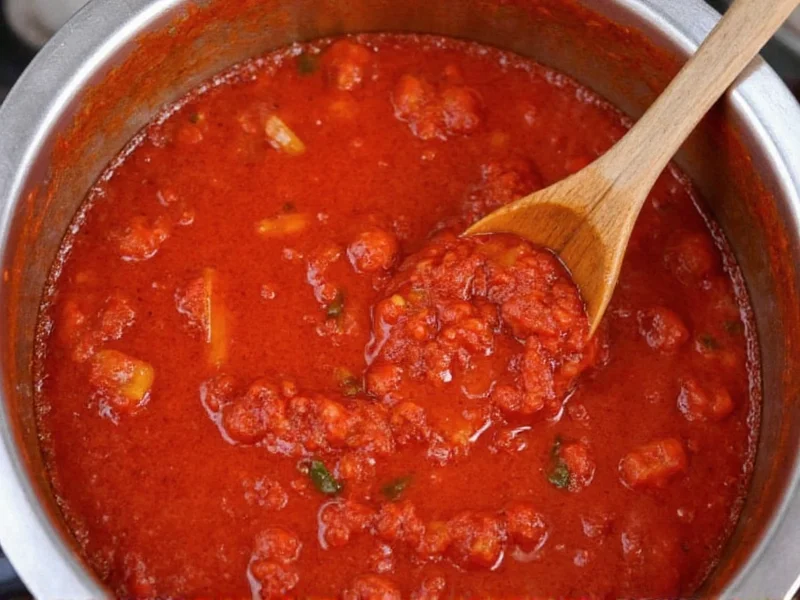When your mouth is burning from spicy chili, reach for dairy products like milk or yogurt immediately—they contain casein that binds to capsaicin, the oil-based compound causing the burn. Avoid water, which spreads the heat. Sugar, honey, or acidic foods like lime can also provide quick relief by neutralizing capsaicin receptors. For chili that's too spicy in the pot, add dairy, acid, or starch to balance the heat.
The Science Behind Spicy Burn Relief
Understanding why certain remedies work requires knowing how capsaicin—the compound in chili peppers that creates heat—interacts with your body. Capsaicin is oil-soluble, not water-soluble, which explains why drinking water often makes the burning sensation worse by spreading the oil around your mouth.
Dairy products like milk, yogurt, or sour cream contain a protein called casein that acts as a detergent, breaking down the oil-based capsaicin molecules. Whole milk works better than skim because the fat content helps dissolve the capsaicin more effectively. For those who are lactose intolerant, coconut milk provides similar relief due to its high fat content.
Immediate Relief Methods for Spicy Food Burn
When you're caught off guard by an unexpectedly spicy bite, these solutions provide the fastest relief:
| Remedy | How It Works | Effectiveness |
|---|---|---|
| Cold milk or yogurt | Casein binds to capsaicin; cold temperature numbs receptors | ★★★★★ (Most effective) |
| Sugar or honey | Disrupts capsaicin binding to pain receptors | ★★★★☆ |
| Lemon/lime juice | Acid neutralizes capsaicin's alkaline properties | ★★★☆☆ |
| Bread or rice | Absorbs capsaicin oil from mouth | ★★★☆☆ |
| Water | Spreads capsaicin oil (ineffective) | ★☆☆☆☆ |
What Not to Do When Your Mouth Is Burning
Certain common reactions actually worsen the burning sensation:
- Drinking alcohol: While small amounts of high-proof alcohol can dissolve capsaicin, most alcoholic beverages are mostly water, which spreads the burn. Beer and wine can actually intensify the sensation.
- Eating more spicy food: This "burn the burn" theory doesn't work and only increases your discomfort.
- Using hot liquids: Heat activates capsaicin receptors, making the burn feel more intense.
- Holding water in your mouth: This merely spreads the capsaicin oil throughout your mouth.
Fixing Overly Spicy Chili in the Pot
If you've discovered your chili is too spicy while cooking, these adjustments can save your dish:
Liquid-Based Solutions
- Add dairy: Stir in 1/2 cup of whole milk, cream, or coconut milk per serving. Dairy's casein neutralizes capsaicin while adding creaminess.
- Increase acidity: Add 1-2 tablespoons of lime or lemon juice. The citric acid helps break down capsaicin molecules.
- Dilute with broth: Add unsalted broth to reduce concentration without altering flavor significantly.
Solid Ingredient Fixes
- Add starch: Incorporate cooked beans, rice, or diced potatoes which absorb excess capsaicin.
- Sweeten slightly: A teaspoon of sugar or honey per serving counteracts heat receptors.
- Add fats: Stir in avocado, olive oil, or nut butter which bind to the oil-soluble capsaicin.
Preventing Future Spicy Disasters
Mastering chili heat requires understanding how to control spice levels from the start:
- Test peppers first: Before adding to your chili, taste a tiny piece of fresh pepper or dip a toothpick in hot sauce to gauge intensity.
- Add heat gradually: Incorporate spicy elements in small increments, waiting 10-15 minutes between additions to allow flavors to develop.
- Balance with complementary flavors: Ingredients like tomatoes, onions, and garlic naturally counterbalance heat.
- Remove seeds and membranes: Most capsaicin resides in pepper seeds and white membranes—removing these reduces heat significantly.
Building Spice Tolerance Over Time
If you want to enjoy spicier chilis without discomfort, gradually build your tolerance:
- Start with milder peppers like poblanos and gradually work toward jalapeños and habaneros
- Pair spicy foods with dairy regularly to condition your palate
- Consume capsaicin consistently—your body produces more receptor sites that adapt to the stimulus
- Never force yourself to extreme heat levels, which can cause physical damage
Frequently Asked Questions
Why does milk help cool spicy food better than water?
Milk contains casein, a protein that binds to capsaicin (the oil-based compound in chili peppers) and breaks it down. Since capsaicin is oil-soluble rather than water-soluble, water merely spreads the burning sensation, while the fat and protein in milk effectively dissolve and wash away the capsaicin molecules.
Can I fix chili that's too spicy after it's been cooked and served?
Yes, you can still reduce spiciness after serving by offering dairy-based sides like sour cream or cheese, or by having guests add sugar, lime juice, or starchy foods like bread to their individual portions. For the main pot, add dairy, acid, or starch as described in the article, though these adjustments may slightly alter the original flavor profile.
Does the type of dairy matter for cooling spicy food?
Yes, higher fat dairy products work better because capsaicin is oil-soluble. Whole milk, full-fat yogurt, and sour cream provide more effective relief than skim dairy products. For non-dairy alternatives, coconut milk works well due to its high fat content, while almond or soy milk offer limited relief unless they're specifically formulated with added fats.
How can I prevent making chili too spicy in the future?
Prevent overly spicy chili by adding heat gradually, testing peppers before use, removing seeds and membranes from fresh peppers (where most capsaicin resides), and balancing spicy ingredients with dairy, acid, or starch from the beginning. Always wait 10-15 minutes after adding spicy elements to allow the heat to fully develop before adding more.
Why does sugar help with spicy food burn?
Sugar helps cool spicy food because it disrupts the binding between capsaicin and the TRPV1 receptors in your mouth that detect heat. The glucose molecules compete with capsaicin for receptor sites, temporarily blocking the pain signals. This is why a spoonful of honey or sugar provides quick, though temporary, relief from spicy burn.











 浙公网安备
33010002000092号
浙公网安备
33010002000092号 浙B2-20120091-4
浙B2-20120091-4